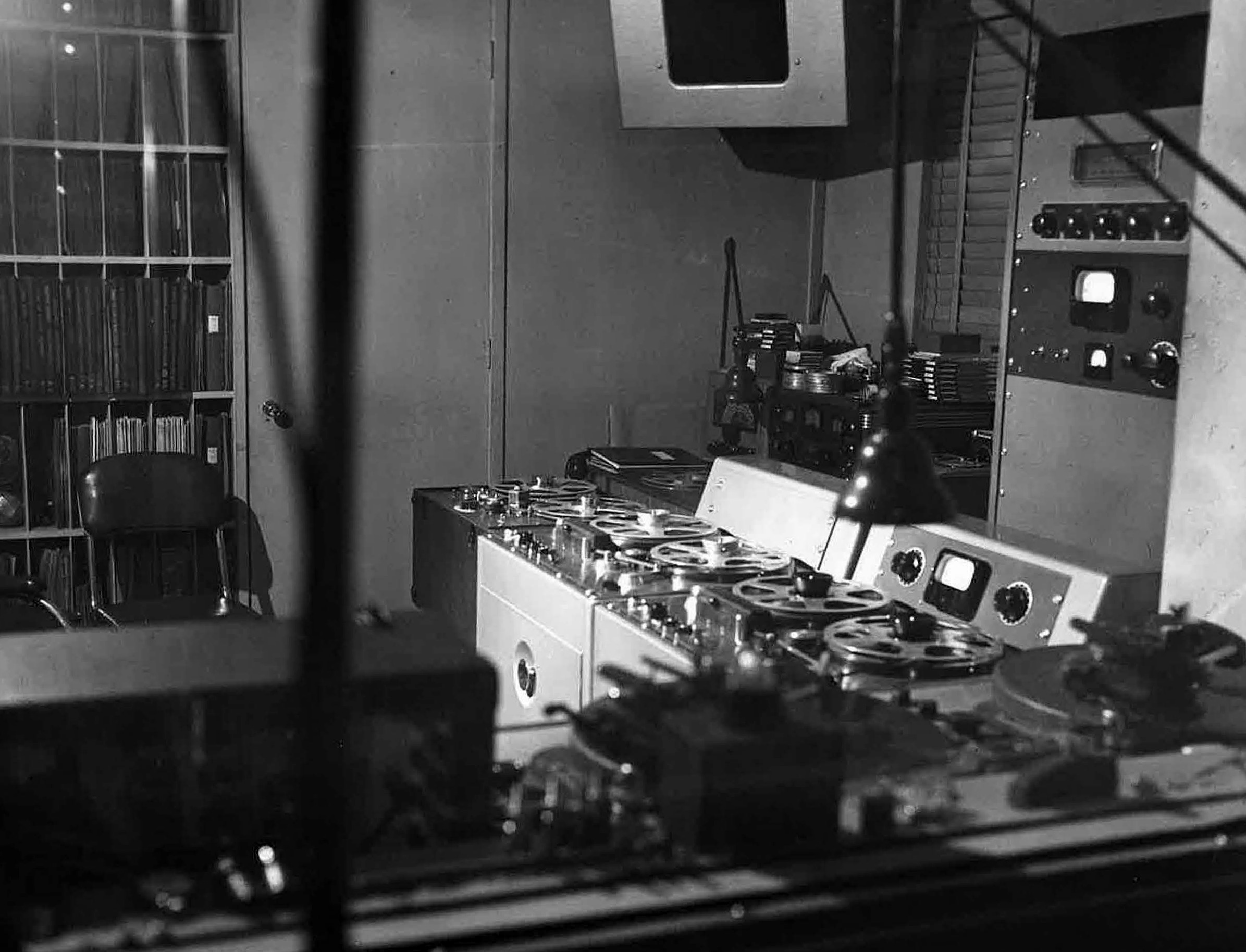| < Back | The Disk Recording Era | A Revolutionary Microphone | Next > |
| Disk Recording < Back |
A Revolutionary Mic Next > |
Beginning in 1948, the widespread availability of magnetic tape recording marked a revolution in the music industry and played a key role in establishing the high-fidelity era of analog recording (Leslie & Snyder, 2010). Tape afforded engineers lower noise, better frequency response, longer recordings times, and the ability to edit a recording. But that revolution didn’t happen overnight. Sometime around 1950, Rudy acquired his first tape recorder, a portable Presto PT-900, but said it “didn’t operate well” (Myers, 2012).
The digital transfer below comes from the private collection of jazz archivist Drew Techner and is currently the earliest known evidence of a Van Gelder recording. The transfer was made by Techner direct from a reel-to-reel tape provided to him by drummer Howie Mann. The reel was in all likelihood made with Rudy’s Presto recorder, and the description on the tape box clearly indicates that the recording was made by Van Gelder at his Hackensack home studio in 1950:
Then, one day in the summer of 1951, there was a special delivery at 25 Prospect Avenue…
Van Gelder acquired his first Ampex 300-C full-track tape recorder in June 1951. Originally introduced in 1949, it was listed at $1,600 at the time (about $16,000 in 2020). Van Gelder had acquired two of the machines by the end of 1953, and though the first was purchased with a loan from his parents (Reed, 1989), he was soon doing well enough with both optometry and recording to afford top-of-the-line equipment. Engineers still work with Van Gelder’s original master tapes today in order to obtain the purest audio signal possible for reissuing many classic jazz albums.
Though it was highly unusual for a home recordist to use such expensive professional equipment, Van Gelder’s acquisition of the Ampex 300-C marked the beginning a lifelong commitment to state-of-the-art gear. In 1987, producer Alfred Lion said of Rudy that he “had top-notch equipment and was intent on making better LPs. If there was anything new in the wind as to equipment, Rudy would get it, no matter what the cost. In that respect, he is still a pioneer and tries to be a step ahead” (Fox, p.67).
Rudy also had a skill for determining what equipment would get him the best results. Sometimes he piggybacked off what he saw other studios using, other times he was ahead of the curve. In either case, he was consistently an early adopter of equipment that would eventually obtain legendary status in the industry.
| < Back | The Disk Recording Era | A Revolutionary Microphone | Next > |
| Disk Recording < Back |
A Revolutionary Mic Next > |

